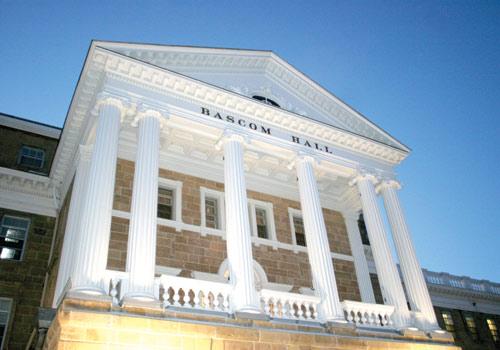For the first time since 2014, Universities of Wisconsin schools have seen an increase in year-to-year enrollment, according to the Universities of Wisconsin website. As part of a goal to continue to drive up enrollment rates, Universities of Wisconsin President Jay Rothman proposed a direct admissions program.
Ten out of 13 universities of Wisconsin opted into the first phase, while UW- Madison, UW-Eau Claire and UW-La Crosse opted out of the program, the Universities of Wisconsin website said.
Direct admission removes the application process, allowing for easier entrance to UW schools, according to UW-Madison assistant professor of education policy Taylor Odle. The program works by directly admitting local high school seniors who fit the university’s standards, Odle said.
Most universities assess applicants based on their ACT, SAT and high school transcript, but Odle said this information is already accessible to the state. Therefore, the application process is just another step to get high-performing students in the door.
“Direct admissions just says, let’s stop making people apply to college because the college application process itself is very complex,” Odle said. “And people come to that with very different levels of financial, social and cultural capital.”
Ten states have implemented direct admissions programs. Idaho was the first state to implement direct admissions in 2015-16 as they began admitting all high school students to their public universities. The state saw enrollment increases of 4-8% in the following years, Odle said.
UW-Green Bay was the first of the UW System schools to implement a direct admissions program, with acceptance letters for fall 2024 going out to all upcoming graduates of the Green Bay Area Public School District, according to UW-Green Bay assistant vice chancellor for enrollment management Jennifer Jones.
“We want to remove the barriers to higher education,” Jones said. “We believe everybody has the potential to learn and to grow into, develop into whatever they would like to be. We just have to set them up for success.”
UW-Green Bay is an open access university, meaning that anyone who is interested in taking a course is able to and there are no baseline admissions requirements, Jones said. There are a variety of programs across UW-Green Bay’s four campuses offering non-degree courses and certificates. Furthermore, the university partners with their local technical college to create additional educational opportunities.
Last year, UW-Green Bay piloted a direct admissions strategy with two pre-college programs, Upward Bound and New Scholars, Jones said. The university issued admissions letters to 30 students along with a $2,500 renewable annual scholarship and 12 students enrolled for the fall semester.
“We knew that the offer of direct admission along with a scholarship worked,” Jones said. “What we wanted to do next was solve the problem of more of our local students engaging in a four year education by offering that same direct admission offer to all the students in Green Bay Area public schools.”
According to Jones, Northeast Wisconsin Technical College and UW-Green Bay are strong partners in education in the area. There are embedded advisors at NWTC that help students make the transition from technical college to UW-Green Bay. UW-Green Bay places staff in high schools to help students figure out if the university is right for them.
Affordability is a barrier for many prospective college students. In March 2023, the UW System’s Board of Regents approved the first tuition increase for Wisconsin residents in 10 years, a Universities of Wisconsin press release said.
“If we can start a conversation by offering free money, scholarships, upfront or grants upfront to students, that’s going to open up that conversation where a four year education becomes a possibility for a student,” Jones said.
Incoming freshmen at UW schools in the fall of 2023 were part of the Wisconsin Tuition Promise initiative. According to the Universities of Wisconsin website, this covers four years of tuition for Wisconsin students coming from families making under $62,000 annually at the 12 UW-System schools — excluding UW-Madison.
But the state legislature has not approved this to continue for further years, leaving the question of college affordability up in the air for many Wisconsin families, the Milwaukee Journal Sentinel said.
UW-Madison has had success with Bucky’s Tuition Promise and UW-Milwaukee, Parkside and Platteville have implemented similar tuition promise programs. UW-Madison also launched Bucky’s Pell Pathway last year, which covered tuition and expenses for 148 and 829 freshman students this fall, according to a press release from UW-Madison.
Without increasing need-based scholarships, UW schools may not see a direct increase in diversity due to their direct admissions process, but will begin the conversation for many Wisconsin families about the role and importance of higher education, Odle said.
“We do see that students who are racially minoritized, who will be the first in their family to attend college and who could be categorized as from low income families — they are more responsive to direct admissions officers, so they’re more likely to then reach out to the institution to learn more to submit that simplified form, but they’re not more likely to ultimately enroll again because … this affordability barrier is still a big issue for them,” Odle said.


